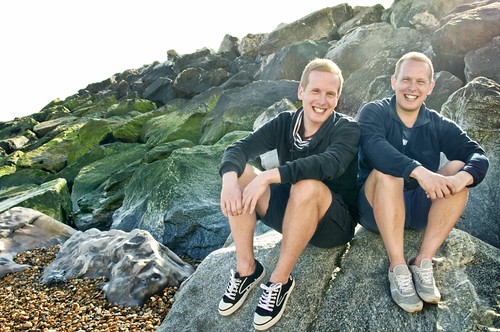The Idealistic View
 The second view of nature can be called the idealistic view. There is some overlap with the realistic view in that it too encompasses nature as ‘all physical things’ as well as ‘the non-human’, but there is one important difference.
The second view of nature can be called the idealistic view. There is some overlap with the realistic view in that it too encompasses nature as ‘all physical things’ as well as ‘the non-human’, but there is one important difference.The idealistic view presupposes and explicitly states that nature is good.
It holds that:
- while some things may be of a sad or distressing nature, and while some things can even be thought of as being ‘evil’, they are still said to be natural in that there will a good in the long run, in the grander scheme of things;
- thus, things are unnatural when they are truly evil and there is no good in the present or the future, since nature could not produce evil on its own.
This view of nature or ‘natural’ is strongly conditioned by observation of the real world, but is ultimately conditioned by cultural values and practice including ecclesiastical values. This is particularly the case in the negative form – unnatural – where such an epithet is a vehement alternate word for ‘bad’ or ‘unacceptable.’
“Behaviour which is ideologically so alien or personally so disgusting to those affected by ‘ideal nature’ that it appears to have no redeeming qualities whatever will be labelled ‘unnatural,’ regardless of whether it occurs in (‘real’) nature never or often, or among humans or lower animals, because it will be assumed that a ‘good’ nature could not under any circumstances have produced it” (Boswell, p13).
Thus it is not surprising that adversaries frequently characterise gay sexuality as being unnatural when in reality, they merely object to it on religious, ideological or cultural grounds.
Gay Sexuality and The Idealistic View
Here are some ideas from Boswell.
- The ‘idealised’ model of what is natural took hold in the very early Christian centuries and the ‘realistic’ model was eschewed or ignored. Thus, the idea that homosexuality was unnatural took root and may have been started by a chance remark of Plato in his Laws, in which he describes it as para physin, traditionally translated as ‘against nature’ but more probably translated in Plato as ‘unrelated to birth’, ‘non-procreative’, as all his earlier works discuss sexual desire as almost exclusively homosexual without the epithet ‘unnatural’.
- The idealised notion that what is outside of nature is unnatural became the touchstone of human ethics for the first few centuries after Christ and thus any sexual activity that was non-procreative was deemed unnatural;
- However, this view fell into disfavour after only a few hundred years, but was revived by the Scholastics in the 13th century.
 |
| St Thomas Aquinas the most famous Scholastic of them all |
In the twenty first century, this view has been discarded by science and philosophy long long ago. It has been utterly rejected in almost all spheres of life.
We regularly and frequently do things that would be deemed unnatural according to this view. For example, we fly on aircraft, we sail in ships, we drive in cars, we comb and wash our hair, we shower, we shave, we cook our food, we clean our teeth, we eat special food on special days like Christmas, we grow flowers and plants indoors, we dye fabrics different colours, we practise birth control. Not one of these things among the thousands of others that I have not mentioned belong in the ‘natural world;’ they are all unnatural in this sense. Yet the power of the idealistic view is brought to full force against gay people on the erroneous assumption that homosexuality does not occur in nature. This stigma is just intellectual laziness and emotional blackmail couched in the language of philosophy but drowning in inconsistency.
“Although the idea that gay people are ‘violating nature’ predates by as much as two millennia the rise of modern science and is based on concepts wholly alien to it, many people unthinkingly transfer the ancient prejudice to an imagined scientific frame of reference, without recognizing the extreme contradictions involved, and conclude that homosexual behaviour violates the ‘nature’ described by modern scientists rather than the ‘nature’ idealised by ancient philosophers” (Boswell, p15).
The use of the idealistic view to denigrate homosexuality as being unnatural (and therefore immoral) is nothing more than a powerfully derogatory label based on “historically sanctioned prejudices and ill-informed ideas about ‘nature’” (Boswell, p15).
Please don’t miss this point. Gay sexuality does not violate nature in any way. It violates only an idealised view of nature by ancient philosophers.
A Scientific Understanding of Gay Sexuality
Again, allow me to go the modern understanding of gay sexuality, based on biology, genetics and psychology; in effect, the nuts and bolts of the first half of Being Gay Being Christian.Human sexual orientation consists of two dominant orientations: heterosexual and homosexual. The former is about 95% of the population while the latter is about 5% of the population. Thus, gay sexuality represents statistically about 1 in 20 people. Gay sexuality has been identified in every society and culture on earth without exception so the anthropologists tell us and has been identified back as far as human records go, so the historians tell us.
 |
| Identical twins Mat and Jon Price of Proud2Be Project |
Both psychology and medicine have not been able to identify any signal for illness, pathology, psychopathology or proclivity to becoming ill in the future as a result of being gay. A gay sexuality is characterised as being a completely normal and consistent variation in the phenomenology of human sexuality by modern science and this is not controversial.
Let no-one say that being gay is unnatural. Let no-one say that a gay sexuality goes against nature. On the contrary, it is very much a part of the natural world for human beings.
Theological Traditions
Let’s now take a brief look at some of the history in the early church regarding the philosophy of natural law.In so far as the Gospels are believed to be an accurate account of the words of Jesus, given that the earliest of the Gospels was probably written about 40 years after his life and ministry, there is no record in any of them of Jesus uttering a word about ‘nature.’ He does talk about storms and the birds and the trees and the fields and various elements of the natural world, but this is not the same thing as the category ‘nature’ as we are using it here.
Paul’s writings did not refer to nature in the abstract. For him, it was always used in the sense of ‘the nature of something’ eg. the Jews, the gentiles, the pagan gods. In Being Gay Being Christian, I discussed the use of the term para physin in the Book of Romans where Paul is talking about homogenital activity, usually, and language scholars would say erroneously, translated as against nature. But we have seen that Paul uses the word much in the same vein as does Plato meaning standard, typical, ordinary, characteristic, expected. Thus, para physin is better translated as ‘beyond what is usual,’ or ‘beside what is ordinary or expected’. A really good translation encompassing both words para and physin would be unexpectedly or uncharacteristically or atypically. It is does not carry the meaning of unnatural as characterised in the idealistic view.
In the epistles of Peter and Jude, the ‘natural’ is actually set in opposition to the righteous, completely going against the model that says the natural can only be good.
The early years of the Christian church were heavily influenced by Platonic and Aristotelian models of ‘ideal nature’ where Platonists viewed nature as either explicitly or implicitly a semi-divine force that transformed the ‘ideal’ into the ‘real’. They considered its dictates to have the force of moral law, as we have been discussing. Greek enculturated Jews took this idealised nature as being the earthly reflection of the will of God.
But once again, more inconsistencies, even for the people of the ancient world. For example, it was known that animals (the natural world) did have incest. Fathers were known to mount female offspring, so it was not a uniform and fully explanatory model, as obviously incest was roundly repudiated. Platonic and other non-Christian models of nature served to ensure that early Christian thinking had no place for real nature. However, ideal nature while being the dominant model for the first few centuries, which included Augustine and the early church fathers (the Patristic period), eventually fell away not to rise again until the Scholastics began to champion it.
In the ancient world, the primary duty of a man was to reproduce in order to provide an heir for land and property. Thus, Christians found it difficult to reconcile such a pervasive value with what they were being told were the demands of Christ and the apostles, eg., the championing of celibacy. The New Testament taught that celibacy was the highest response to human eroticism. Paradoxically, not only was there no Scriptural imperative to procreate in the New Testament, it was considered morally superior not to. It did not make sense. Yet at exactly the same time, both masturbation and homosexuality were deemed equally unnatural as was failure to divorce a barren woman, all on the same grounds.
St Augustine (354 – 430CE) considered intercourse within marriage for any other reason than for procreation to be inherently sinful. This is so far out of our way of understanding human sexuality today that it is hard for us to accept that this great man believed such nonsense. He actually instructed Christian women to have their husbands perform non-procreative sexual acts with prostitutes if they found it absolutely necessary rather than sullying the marriage bed with such base conduct; for us today, completely risible, incredible and intolerable.
In his writings, Augustine was ultimately unconcerned with nature; much more with grace. Although he uses phrases like ‘the natural use’ and ‘against nature’, his use of the word focused on concepts of something being ‘normal’, ‘characteristic’ or ‘native’, more in line with Paul’s use of the word and the category. Homosexuality, being relatively unfamiliar to him, is thus seen as incongruous and contrary to human custom.
In the Patristic period, Boswell states that objections by theologians to homosexuality were based more on non-conformity to gender expectations than to appeals to nature, ie., a man be mounted by another man would be a counter-cultural act rather than an unnatural act. In the west in the post-Patristic period, ‘ideal nature’ is absent from any serious theological works and has been considered to be unrelated or even in opposition to Christian moral issues.
Conclusion
The harm that has been caused the LGBT community because of the argument of natural law espoused over the centuries has been incalculable. Before the rise of modern evangelical fundamentalism only one hundred or so years ago, the dominant argument against homosexuality was that it was contra naturam – para physin – against nature. And this philosophy has leeched its way across history and into our everyday thinking right out of the Latin declarations in Rome whence it was first made. To this day, many everyday people still think that being gay is unnatural. The Catholic Church needs to look at its teachings and doctrines again. There are many people within its folds who have called and continue to call for such a review. Its teachings on human sexuality which officialdom believes are in keeping with the Gospel go where the Gospel does not go and trample upon the lives of good people both gay and straight and encumber them with burdens that are unnecessary and untrue.In the twenty-first century having come through the Enlightenment and the acceptance of a scientific approach to knowledge, we have achieved a superior understanding of how human beings are “fearfully and wonderfully made” to that of the first few centuries of the Christian era and the mediaeval world.
We of faith still believe in a creator God whose Spirit has never stopped creating and continues to do so in and around us. As a gay man of faith, I understand that God’s vast creative act is an act of such breath-taking diversity that we will never fully appreciate and understand all there is to know even just about this world let alone the cosmos and the realm of God’s Spirit after we leave here. Part of that incredible diversity is the wondrous creation of gay people amongst the crowning glory of creation, the human race. We are not all just cookie-cutter cut-outs; little straight ginger-bread men and women. No, we are diverse and different and wonderful. So far from being the result of a fallen sinful world where I just happened to have drawn the short straw in the game of a capricious and adolescent deity, as a gay man I believe in a loving God whose generosity of heart stretches over all the earth and to every person.
I do not pretend to have it all worked out. There remain so many questions, but I choose to believe (that’s what faith is) in a relational God who is passionate about us all, created straight and gay, where we are all valued and loved. For me, a gay man, it is the most natural thing in the world when I care for my partner, share our lives together, hold him, kiss him or make love to him. It is not against my nature. It not against nature at all.
Being gay is the most natural thing in the world.
[1]
Boswell, J. (1980). Christianity, Social
Tolerance and Homosexuality: Gay people in Western Europe form the beginning of
the Christian era to the fourteenth century. The University of Chicago.
Pax et Amor - Stuart










